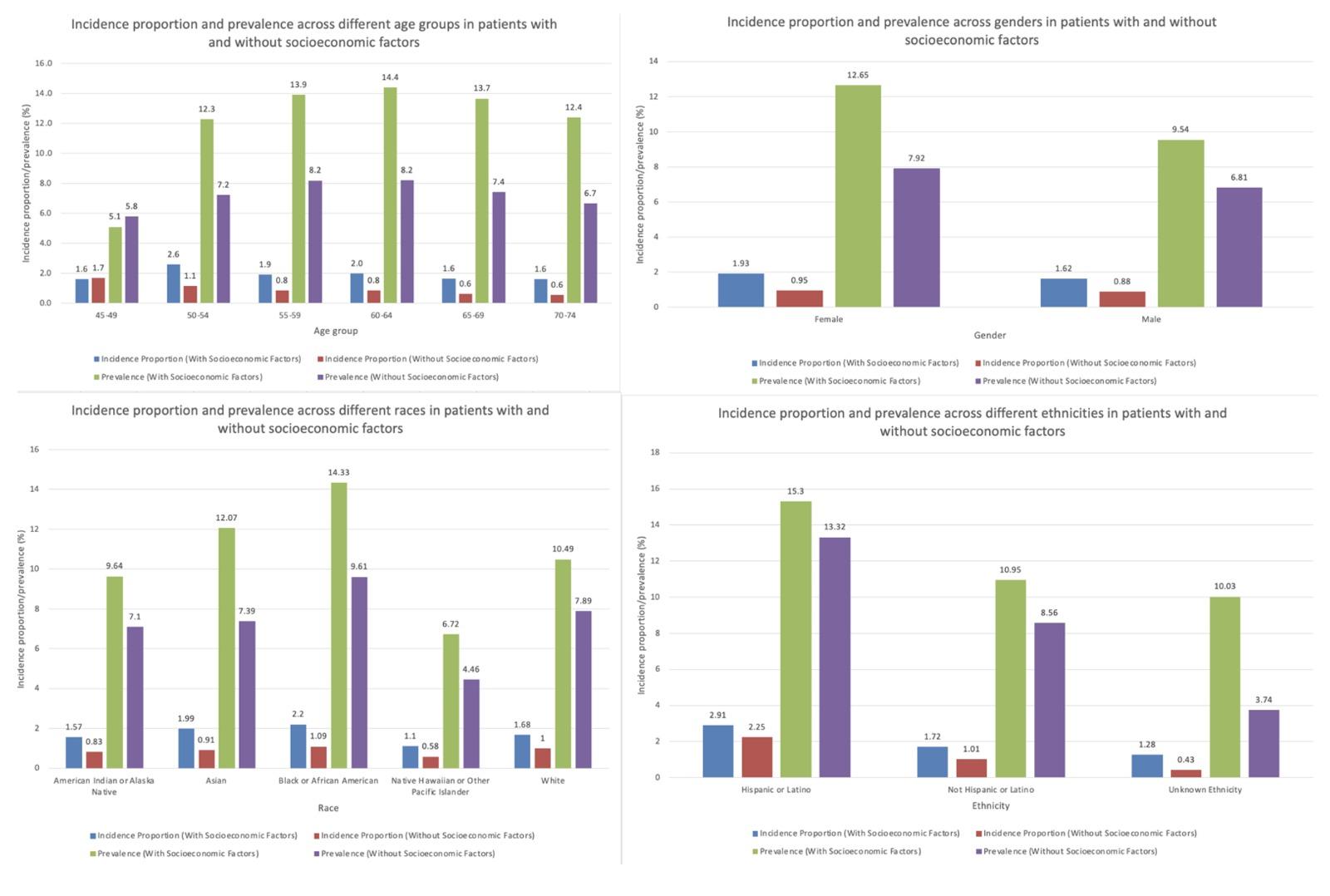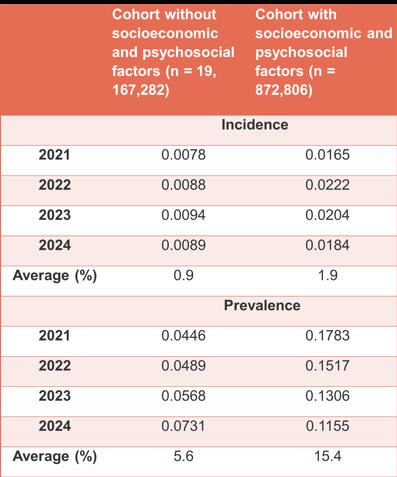Monday Poster Session
Category: Colorectal Cancer Prevention
P2610 - Socioeconomic Disparities in Colorectal Cancer Screening Trends
Monday, October 27, 2025
10:30 AM - 4:00 PM PDT
Location: Exhibit Hall

Amer Arman, MD
MedStar Health
Detroit, MI
Presenting Author(s)
Amer Arman, MD1, Omar Arman, MD, MPH2, Lan Nguyen, DO2, Zeid Jarrar, MD3, Hebah Jaber, MD4, Khaled Rafeh, MD5, Mazen Zamzam, BS6, Jad Bou-Abdallah, MD2
1MedStar Health, Washington, WA; 2University at Buffalo, Buffalo, NY; 3University of Jordan School of Medicine, Amman, 'Amman, Jordan; 4Mutah University, Mutah, Al Karak, Jordan; 5School of Medicine, The University of Jordan, Shmeisani, 'Amman, Jordan; 6Oakland University William Beaumont School of Medicine, Royal Oak, MI
Introduction: Colorectal cancer (CRC) is the second leading cause of cancer-related deaths in the U.S., with early detection crucial for improving outcomes. However, disparities in CRC screening rates persist among socioeconomically disadvantaged populations. This study evaluates screening trends from 2021 to 2024 to identify areas for public health improvement.
Methods: We analyzed CRC screening data from the TriNetX network for 2021–2024, focusing on patients aged 45–75 without prior colon cancer diagnoses. Cohorts were stratified into those with socioeconomic challenges (n=872,806; ICD10CM: Z55–Z65) and those without (n=19,167,282). Incidence and prevalence rates were calculated and further stratified by gender, age, race, and ethnicity.
Results: Patients with socioeconomic challenges had significantly higher average screening incidence (1.9%) and prevalence (15.4%) compared to those without (incidence: 0.9%, prevalence: 5.6%) (Figure 1). However, prevalence among those with socioeconomic factors declined steadily, from 17.8% in 2021 to 11.6% in 2024. Stratified analysis revealed notable disparities (Figure 2): African Americans had the highest screening rates (incidence: 2.1%, prevalence: 14.3%), while Native Hawaiian and Other Pacific Islander populations had the lowest (incidence: 0.6%, prevalence: 4.5%). Males consistently lagged behind females in screening rates, and younger adults (45–49) showed high incidence (1.6%) but low prevalence (6.7%), indicating gaps in sustained care.
Discussion: Public health interventions have improved CRC screening rates among socioeconomically disadvantaged populations. However, disparities persist, particularly among males, Native Hawaiian/Other Pacific Islander populations, and younger age groups. Addressing these gaps through targeted outreach and equitable healthcare policies is critical for improving CRC prevention and health equity.

Figure: Figure 1: Incidence proportion and prevalence of CRC screening in cohorts with and without
socioeconomic and psychosocial factors from 2021 to 2024

Figure: Figure 2: shows incidence proportion and prevalence of CRC screening in individuals with and without socioeconomic factors across age groups, gender, races, and ethnicities in the year 2024
Disclosures:
Amer Arman indicated no relevant financial relationships.
Omar Arman indicated no relevant financial relationships.
Lan Nguyen indicated no relevant financial relationships.
Zeid Jarrar indicated no relevant financial relationships.
Hebah Jaber indicated no relevant financial relationships.
Khaled Rafeh indicated no relevant financial relationships.
Mazen Zamzam indicated no relevant financial relationships.
Jad Bou-Abdallah indicated no relevant financial relationships.
Amer Arman, MD1, Omar Arman, MD, MPH2, Lan Nguyen, DO2, Zeid Jarrar, MD3, Hebah Jaber, MD4, Khaled Rafeh, MD5, Mazen Zamzam, BS6, Jad Bou-Abdallah, MD2. P2610 - Socioeconomic Disparities in Colorectal Cancer Screening Trends, ACG 2025 Annual Scientific Meeting Abstracts. Phoenix, AZ: American College of Gastroenterology.
1MedStar Health, Washington, WA; 2University at Buffalo, Buffalo, NY; 3University of Jordan School of Medicine, Amman, 'Amman, Jordan; 4Mutah University, Mutah, Al Karak, Jordan; 5School of Medicine, The University of Jordan, Shmeisani, 'Amman, Jordan; 6Oakland University William Beaumont School of Medicine, Royal Oak, MI
Introduction: Colorectal cancer (CRC) is the second leading cause of cancer-related deaths in the U.S., with early detection crucial for improving outcomes. However, disparities in CRC screening rates persist among socioeconomically disadvantaged populations. This study evaluates screening trends from 2021 to 2024 to identify areas for public health improvement.
Methods: We analyzed CRC screening data from the TriNetX network for 2021–2024, focusing on patients aged 45–75 without prior colon cancer diagnoses. Cohorts were stratified into those with socioeconomic challenges (n=872,806; ICD10CM: Z55–Z65) and those without (n=19,167,282). Incidence and prevalence rates were calculated and further stratified by gender, age, race, and ethnicity.
Results: Patients with socioeconomic challenges had significantly higher average screening incidence (1.9%) and prevalence (15.4%) compared to those without (incidence: 0.9%, prevalence: 5.6%) (Figure 1). However, prevalence among those with socioeconomic factors declined steadily, from 17.8% in 2021 to 11.6% in 2024. Stratified analysis revealed notable disparities (Figure 2): African Americans had the highest screening rates (incidence: 2.1%, prevalence: 14.3%), while Native Hawaiian and Other Pacific Islander populations had the lowest (incidence: 0.6%, prevalence: 4.5%). Males consistently lagged behind females in screening rates, and younger adults (45–49) showed high incidence (1.6%) but low prevalence (6.7%), indicating gaps in sustained care.
Discussion: Public health interventions have improved CRC screening rates among socioeconomically disadvantaged populations. However, disparities persist, particularly among males, Native Hawaiian/Other Pacific Islander populations, and younger age groups. Addressing these gaps through targeted outreach and equitable healthcare policies is critical for improving CRC prevention and health equity.

Figure: Figure 1: Incidence proportion and prevalence of CRC screening in cohorts with and without
socioeconomic and psychosocial factors from 2021 to 2024

Figure: Figure 2: shows incidence proportion and prevalence of CRC screening in individuals with and without socioeconomic factors across age groups, gender, races, and ethnicities in the year 2024
Disclosures:
Amer Arman indicated no relevant financial relationships.
Omar Arman indicated no relevant financial relationships.
Lan Nguyen indicated no relevant financial relationships.
Zeid Jarrar indicated no relevant financial relationships.
Hebah Jaber indicated no relevant financial relationships.
Khaled Rafeh indicated no relevant financial relationships.
Mazen Zamzam indicated no relevant financial relationships.
Jad Bou-Abdallah indicated no relevant financial relationships.
Amer Arman, MD1, Omar Arman, MD, MPH2, Lan Nguyen, DO2, Zeid Jarrar, MD3, Hebah Jaber, MD4, Khaled Rafeh, MD5, Mazen Zamzam, BS6, Jad Bou-Abdallah, MD2. P2610 - Socioeconomic Disparities in Colorectal Cancer Screening Trends, ACG 2025 Annual Scientific Meeting Abstracts. Phoenix, AZ: American College of Gastroenterology.
